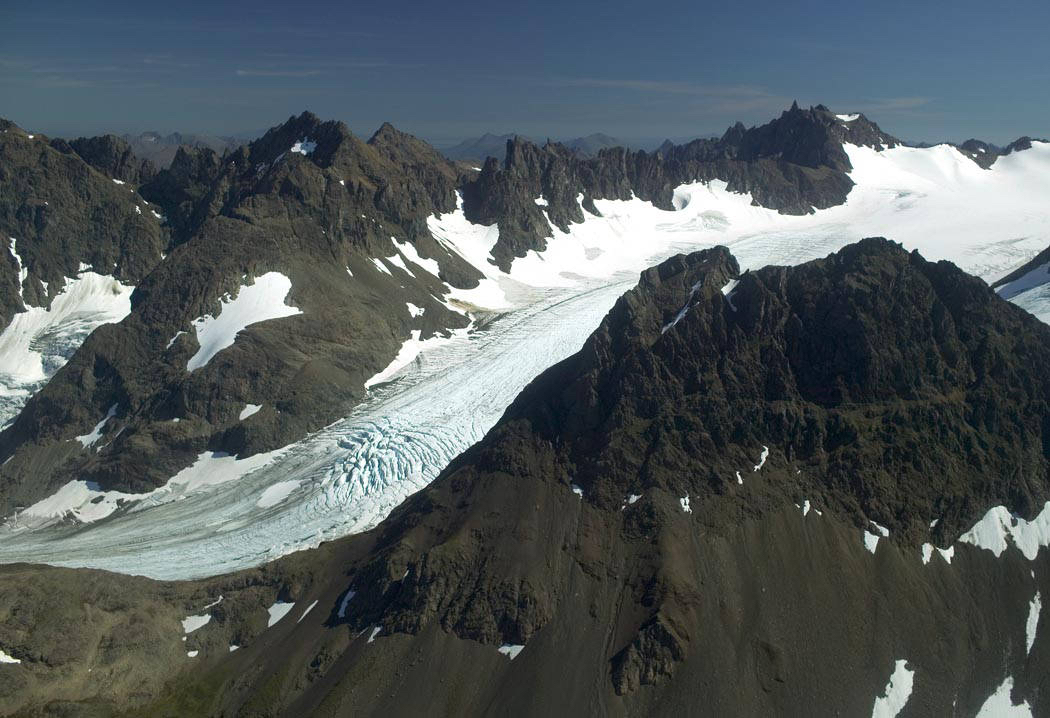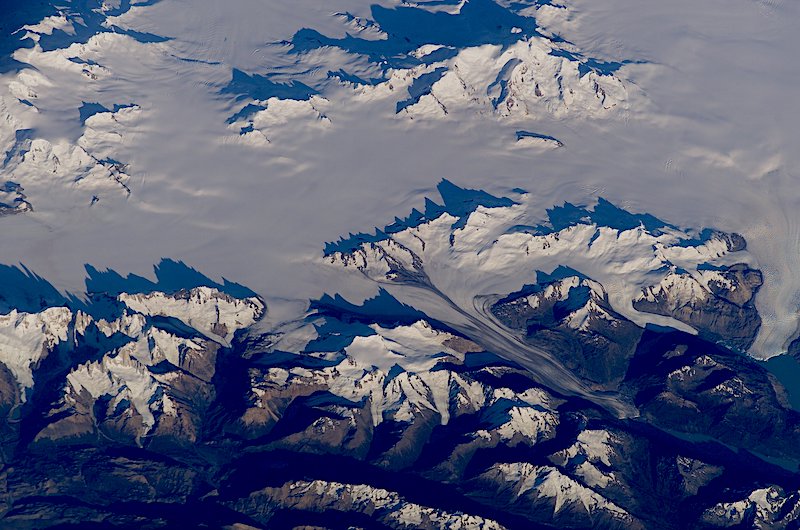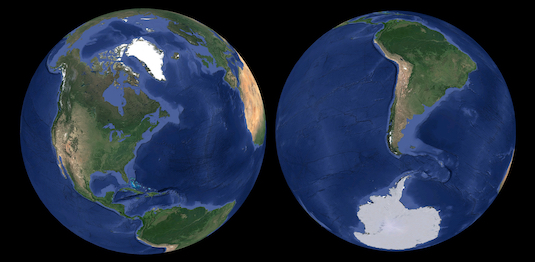Types of glaciersTwo major categories of glaciers are alpine and continental glaciers. Alpine glaciers are those that form at high altitudes in mountainous regions where the temperature is favorable for their formation. There are four types of alpine glaciers, cirque, valley, piedmont, and ice field shown in Figure 19.1.4. They range from glaciers a few hundred square meters to vast expanses that smother whole mountain ranges. Cirque glaciers form in bowl-shaped depressions, called cirques, scoured into the side of a mountain. Weathering and erosion loosen bedrock at the head of of a preexisting stream valley as ice accumulates. As erosion proceeds, a depression forms in which the cirque glacier continues to grow. Valley glaciers fill former stream valleys with ice as they push outward from their zone of accumulation. Cirque glaciers that grow beyond the limits of the depression in which they form spill out to become valley glaciers. Piedmont glaciers form when valley glaciers flow out of canyons onto the lowland adjacent to a mountain front. Ice fields are confined to large basins or plateaus having tall mountain peaks called nunataks protruding above the ice. Ice fields feed alpine valley glaciers. Figure 19.8 An alpine glacier in Togiak National Wildlife Refuge, Alaska.
Figure 19.9 Southern Patagonian Ice Field, Argentina-Chile. Courtesy NASA JSC. Click image to enlarge.
Continental glaciers are vast, continuous masses of ice that originate in high latitudes and cover portions of a continent or island Figure 19.10). Continental glaciers flow outwards in all directions from thicker ice near the center of the ice mass towards the thinner periphery of the ice mass. Continental glaciers are considered "unconfined glaciers" because they flow over a landscape and generally are not affected by it. Figure 19.10 The only continental glaciersI ice sheets are found in Greenland and Antarctica. . Source: NASA. Click image to enlarge. There are three types of continental glaciers, ice sheets, ice caps, and outlet. An ice sheet covers an area larger than 50,000 square kilometers (19,305 sq. mil.). Greenland and Antarctica and are covered by massive ice sheets today. The Greenland ice sheet occupies 1,710,000 square kilometers (660,000 sq. mi), nearly 80 % of Greenland. The ice sheet is over 3 km (1.9 mi) at its thickest point. The Antarctic ice sheet covers nearly 98% of the continent. With almost 14 million square kilometers (5.4 million sq. miles) of ice, the Antarctic ice sheet is the largest single mass of ice on Earth. The ice sheet has a maximum thickness of 4.78 kilometers (2.97 miles). An ice cap is a dome-shaped mass of ice of less than 50,000 square kilometers (approximately 19,000 square miles) and usually covering a highland area. Though covering a mountainous region, an ice cap is categorized as a type of continental glacier because it is not constrained by the topography. Think of an ice cap as a precursor to an ice sheet. The Vatnajokull ice cap in Iceland, the large mass of ice in Figure B, sits on top of three active volcanoes. The bright green lakes and coastal waters are the result of very fine sediment eroded by glaciers and washed out in glacial meltwater. Outlet glaciers are similar to valley glaciers as they are confined by the topography but originate from an ice cap.
Figure 19.11 Antarctica 2009 |



